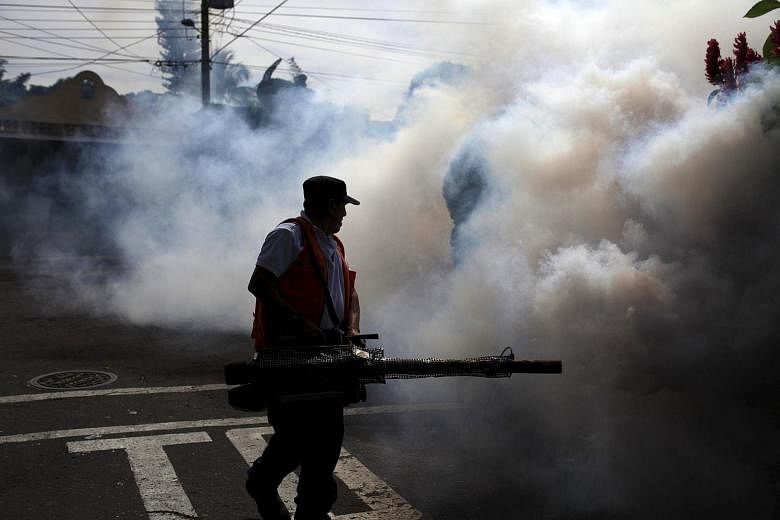ZIKA (Uganda) • Down winding paths through dense jungles, Mr Gerald Mukisa kicks up the dry leaves noisily with his feet to provide warning sounds, noting that the late afternoon heat is "snake time".
The forest is calm. Only the sound of insects, birdsong and the rustle of monkeys in the jungle canopy above disturb the air.
It was here in the thick woodland of Zika forest, some 25km from Uganda's capital Kampala, that the mosquito-borne Zika virus was first discovered in 1947.
The virus, linked to a surge in birth defects, is "spreading explosively", World Health Organisation chief Margaret Chan said last week. An emergency meeting on the outbreak is due today.
Mr Mukisa, a forest caretaker and tour guide for the past seven years, found out about the virus that takes its name only two weeks ago. "A few people who live near the forest and have heard about it are getting worried," he said. "Many others don't know about it."
Days ago, the tropical Zika forest was a little-known reserve visited only by birdwatchers and scientists. Zika means "overgrown" in the local Luganda language.
Most local cases of the virus were mild, resulting in rash, fever, and red eyes in a small fraction of cases. Uganda's Health Ministry is keen to point out it has no known cases of the virus, and that the current outbreak in the Americas did not originate in East Africa.
"We have not recorded a case in Uganda in several years and we don't have such an outbreak," the ministry said in a statement.
Today the forest, close to the main highway from Uganda's international airport at Entebbe to the nearby capital Kampala, remains a research site for the Uganda Virus Research Institute (UVRI), an environmental health and protection agency founded in 1936 and headquartered 15km away.
The 12ha site has over 60 different types of mosquitoes.
The details of the virus' discovery, written up in a 1952 paper by Britain's Royal Society of Tropical Medicine and Hygiene, described the "forested area called Zika", where scientists were researching yellow fever among small rhesus macaque monkeys.
"This area of forest consists of a narrow, dense belt of high but broken canopy growth with clumps of large trees," the 1952 paper read.
Top UVRI scientist Julius Lutwama, 56, described how caged monkeys had been placed at different heights, with a 36m steel tower allowing researchers to carry out studies in the canopy of the thick trees. "Blood samples would be taken from these monkeys to try to diagnose yellow fever... actually that is how this disease was found," he said.
AGENCE FRANCE-PRESSE

